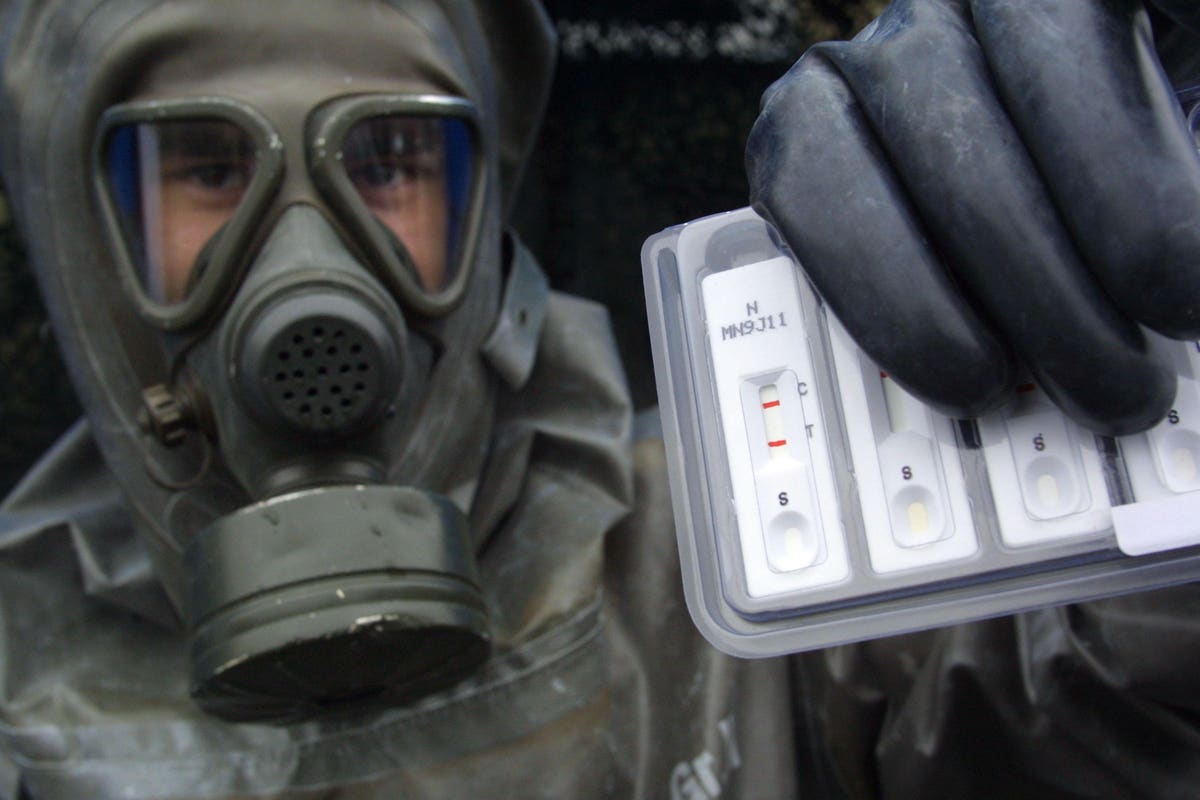After a year of relative restraint, President Joe Biden’s $25 billion request for Ukraine aid suggests the Administration is finally playing to win the Ukraine war—and win the war quickly. The ongoing battlefield stalemate in Ukraine is already widening the conflict into Russia and the Black Sea, and an extended war of attrition may well tempt Russia into escalating the conflict through the employment of nuclear or chemical weapons.
Vladimir Putin, Russia’s leader, has both employed chemical weaponry and, via the threat-laden development of next-generation nuclear weaponry, chipped away at the world-spanning taboo against nuclear weapons.
In Ukraine, the West’s efforts at pre-emptive escalation management, while prudent, were always more a product of fear and emotion than the result of real-world analysis. In the end, this “responsible timorousness” has done little more than starve Ukraine of weaponry needed to break Russia’s invasion force.
Now, with the Ukrainian battlefield relatively frozen, chemical and nuclear weaponry will start sneaking into Russia’s strategic calculus.
We have been here before. If Ukraine does not win—and win soon—the West must prepare for some ugly and tense rounds of Russian-style nuclear or chemical brinksmanship.
The Past As Prologue
Nuclear brinksmanship is a tried and true tactic of the modern age. Nobody is immune to temptation; when faced with a bloody, costly conflict, both democrats and despots have turned to unconventional weapons.
Take the Korean conflict. By mid-1951, about a year into the Korean War, the Korean battlefield had devolved into bloody trench warfare. The front line had essentially frozen around the 38th parallel. To break the stalemate, President Dwight D. Eisenhower, after entering office in early 1953, started multifaceted efforts to decrease the political and diplomatic costs of nuclear weapons use. The President made little effort to hide his desire to reduce the taboo surrounding nuclear weapons. And, by May of 1953, Eisenhower was publicly hinting that if armistice negotiations failed in Korea, nuclear weapons might be viable option.
The threats worked, and the war ended within a few months.
Along with nuclear brinksmanship, long battlefield stalemates have also led to the use of chemical weapons.
The Iran-Iraq War, starting in 1980, almost immediately settled around fixed lines. The conflict, characterized by massive human wave attacks, was tremendously costly. The aggressor, Iraq, was struggling against Iran’s numerous forces and larger resource-base. By mid 1981, Israel become sufficiently concerned about Iraq’s accelerating interest in nuclear weapons that it bombed the Osirak nuclear reactor at Iraq’s Tuwaitha Nuclear Research Center.
Deprived of the nuclear option, Iraq turned to chemical weaponry. In 1982, Iraq started employing riot control agents on the battlefield, and by mid-1983, Iraq was employing basic mustard agents in support of major battlefield efforts. In 1984, Iraq graduated to nerve agents, also adopting a more easily disseminated “dusty mustard” mustard agent formulation. By 1988, fear of long-range nerve agent attacks encouraged up to a half of Tehran’s residents to evacuate, and Iraq, hardened to the use of chemical agents, started using chemical weapons on Iraqi citizens, massacring thousands of Kurds in Halabja.
Brinksmanship is not just a Cold War phenomenon. Persistent battlefield stalemates, coupled with fears of resource exhaustion, bring outlawed weapons into action.
As recently as 2012, almost two years after the outbreak of the Syrian Civil War, Syria was stuck, unable to assert control in separatist strongholds. Russia’s client state began marching up the chemical agent escalation ladder, using industrial chemicals, blister agents and nerve agents on the battlefield. In 2013, this effort culminated in a series nerve agent attacks in the Damascus suburbs of Ghouta, and major chemical attacks on Idlib province in 2017.
The distressingly somnolent global response to Syrian employment of nerve agents—aided by Russia’s disinterest in allowing international investigations into Syria’s employment of chemical weapons—reduced the international taboo against chemical weapons. That, in turn, likely facilitated the adoption and widespread use of nerve agents by North Korean and Russian assassination teams.
In 2017, North Korean agents used VX nerve agent to kill Kim Jung-nam, the brother of current North Korean leader Kim Jong Un, in Malaysia. Then, Russian operatives were caught employing Novichok nerve agents in 2018 to try and kill Sergei Skripal, a UK-based Russian defector. Undaunted, Russia used nerve agents to try and kill reformist politician Alexei Navalny.
Researchers subsequently tied the Russian agents implicated in the Navalny incidents to a series of likely nerve agent attacks between 2014 and 2019, including three suspicious organophosphate-related poisonings in Bulgaria, repeated poisonings of Russian opposition leader Vladimir Kara-Murza, as well as to a spate of untimely and unsolved deaths of other Russian opposition activists.
Stalemate Is Dangerous
As the fight in Ukraine progressed, it has been disturbing to see textbook-driven theories of escalation management trump the hard realities of the historical record.
Ironically, West’s inflated fears of Russian nuclear escalation in Ukraine constrained the flow of weapons to Ukraine. Unfounded restraint has led to nothing more than a grinding battlefield stalemate—and to the very scenario recent history suggests is most likely to lead to a nuclear or chemical escalation.
If the past is prologue, the only viable alternative is to do what the West needed to do from the beginning—give Ukraine the all the tools, cooperation and coordination they need to roll back the Russian invasion, and win the war as quickly as possible. A Ukraine stalemate is a global threat, and, after a year of delay and dithering, we had best start acting like it actually is one.
Read the full article here





